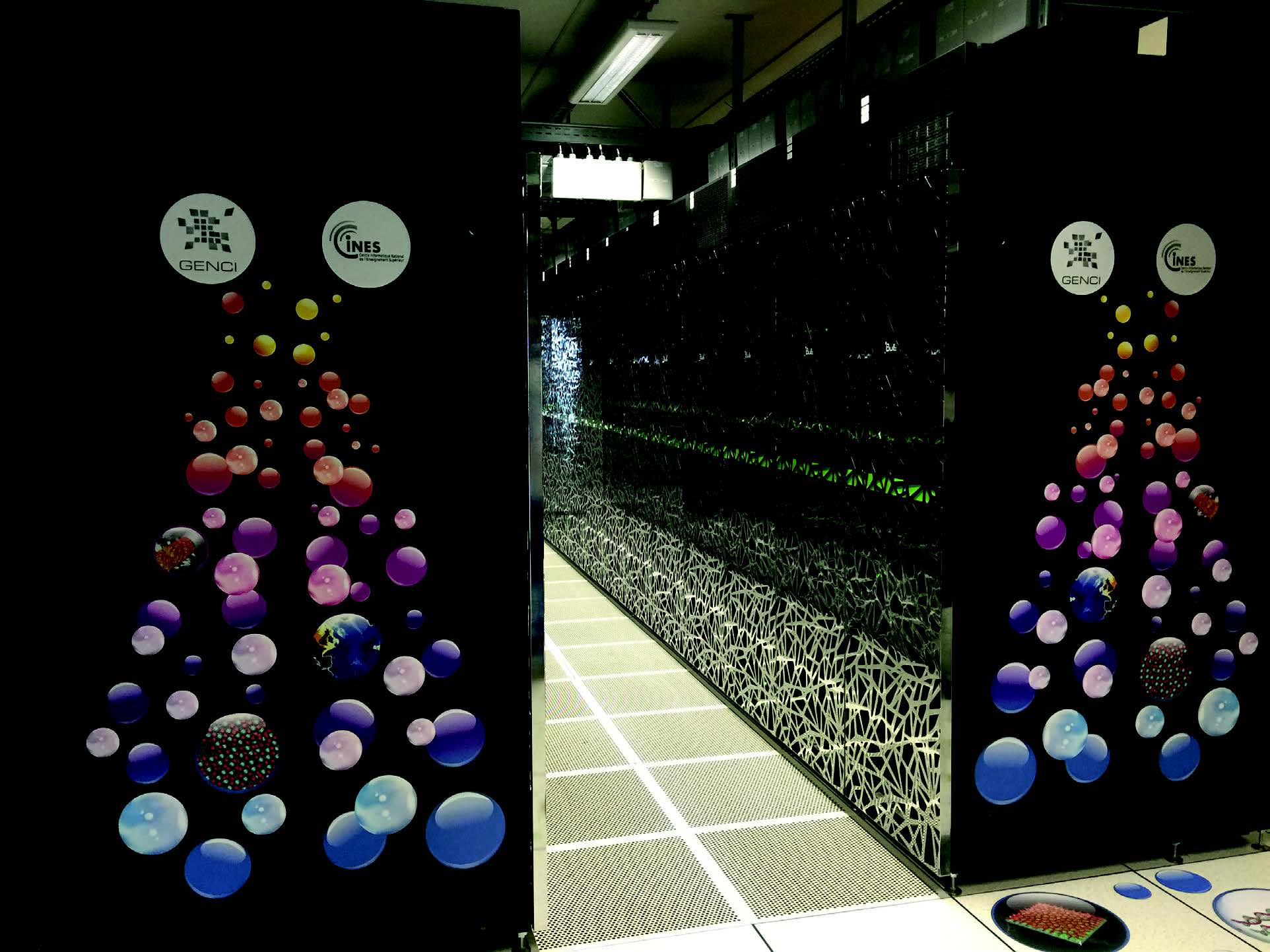Paris, April 28, 2020
Two of the most powerful supercomputers in France, Joliot-Curie, operated at the CEA’s supercomputing center (TGCC), and Occigen, operated at CPU’s supercomputing center (CINES), are supplying urgent computing accessibility to big computer assets to European exploration groups concerned in the fight in opposition to COVID-19. The purpose is to complete epidemiological reports of COVID-19 virus distribute, have an understanding of its molecular framework and actions and massively display screen and test possible long term molecules, to speed up the search for an productive vaccine and assist the international fight in opposition to the virus. Both of those supercomputers are based on Atos’ BullSequana system, international leader in digital transformation.
Right after only a handful of weeks of GENCI’s COVID 19 speedy observe accessibility, GENCI, the French nationwide large-efficiency computing agency, announces that there are now a lot more than 20 scientifically numerous COVID19 tasks, working on its 3 nationwide supercomputers among which are Joliot-Curie and Occigen, collectively with Jean Zay at IDRIS, with the dedicated help of assist groups in these facilities.
Joliot-Curie at TGCC
Joliot-Curie, with its 22 petaflop/s, is the most powerful supercomputer in France dedicated to educational and industrial open exploration. As component of PRACE (Partnership for Superior Computing in Europe), European researchers are relying on Joliot-Curie to run now three COVID-19 big scale tasks in the context of the PRACE COVID-19 Speedy Monitor contact. Just one task simulates the functional proteins of the SARS-CoV-2 virus designed from millions of atoms to have an understanding of the mechanisms of the virus infection in order to build therapeutics. The other task utilizes computational screening, a very well-recognized strategy applied in drug discovery, to identify and improve viral protein inhibitors, molecules which are capable of blocking the SARS-Cov-2 protein. This task could help supporting the advancement of a procedure to sluggish down the COVID-19 outbreak.
The final task combines the review of the outcome of antimalarial medicine on several human coronary heart tempo styles having into account a range of comorbidities that could be current in the contaminated population, and also utilizes computational fluid dynamics (CFD) to improved have an understanding of the complicated hemodynamics connected with Nord-South Syndrome.

In addition to these PRACE COVID-19 Speedy Monitor tasks, groups of researchers are carrying out preparatory simulations on precedence nationwide allocations of computing potential on the Joliot-Curie supercomputer. For illustration, researchers from the Grenoble Interdisciplinary Exploration Institute (IRIG) and the CEA’s Joliot Institute are doing work on the search of inhibitors in COVID-19. The SPIKE protein makes it possible for the virus to penetrate the mobile membrane. Many thanks to the simulation of the electronic framework of the protein and the connected inhibitor, it is attainable to present specific data on the strength of the inhibition but also structural data to identify the amino acids anxious and their connected polarities. This first work created it attainable to validate the strategy and so to post a fifteen-million-hour task to PRACE to review the microscopic and thermodynamic components that could or could not favour the conversation in between the major SARS-CoV-2 protease and promising new inhibitors. The goal is to make an ab initio in silico resource to estimate properly the conversation attributes of proteins interacting with all styles of ligand households.
Occigen at CINES
Among the the COVID-19 connected tasks on Occigen, researchers are working simulations to review the SARS-Cov-2 helicase enzymes in further depth, in order to improved have an understanding of the genetic make-up of the virus. It is also currently being massively applied – daily further than 40,000 cores, around 50 % of the overall Occigen’s potential shaped by 86,000 cores for 3.five petaflop/s – with computational screening techniques, to practically test a lot more than 1.five billion molecules a thousand of which will be synthesized and examined in labs for their skill to inhibit SARS-Cov-2. The scale of this digital screening is unprecedented and is only created attainable because of to the computing electricity of the supercomputer.

Stephane Requena, CTO of GENCI, mentioned: “We’re proud with the 3 nationwide facilities to be in fight in opposition to COVID-19 and that our powerful supercomputing and AI capabilities are currently being applied by researchers to lead to these initiatives. We hope that these computational conclusions from the 20+ tasks at the moment working on our techniques, will assist researchers and researchers to have an understanding of a lot more about the virus and eventually help build a procedure to cease this pandemic.”
Pierre Barnabé, Head of Public Sector & Defense and Head of Significant Data & Cybersecurity, Atos, added: “We are honored to assist these researchers and researchers in their work to help fight in opposition to COVID-19. By employing the functionality of our BullSequana supercomputers, which run hundreds of times a lot quicker than common personal computers, we are enabling them to help you save valuable time and aiding uncover a treatment to this pandemic.”
Christine Ménaché, Head of the CEA’s Pretty Substantial Computing Center (TGCC) and Boris Dintrans, Director of CINES jointly point out: “All the TGCC’s and CINES’s assist groups have been mobilized in a robust spirit of solidarity to meet up with the anticipations of all end users and in individual these scientific tasks in relationship with Covid19.”
Supercomputers have tens of hundreds of processors that work collectively to complete big calculations, process and review big amounts of knowledge employing AI algorithms. GENCI’s altogether merged supercomputing techniques characterize now a lot more than forty one petaflop/s of computing potential and one hundred petabytes of substantial knowledge storage.





More Stories
How to Protect Your Tan While You Vacation?
Choosing Reliable and Trustworthy Auto Shop in Brisbane
How Technology Has Changed The Face Of Dentistry